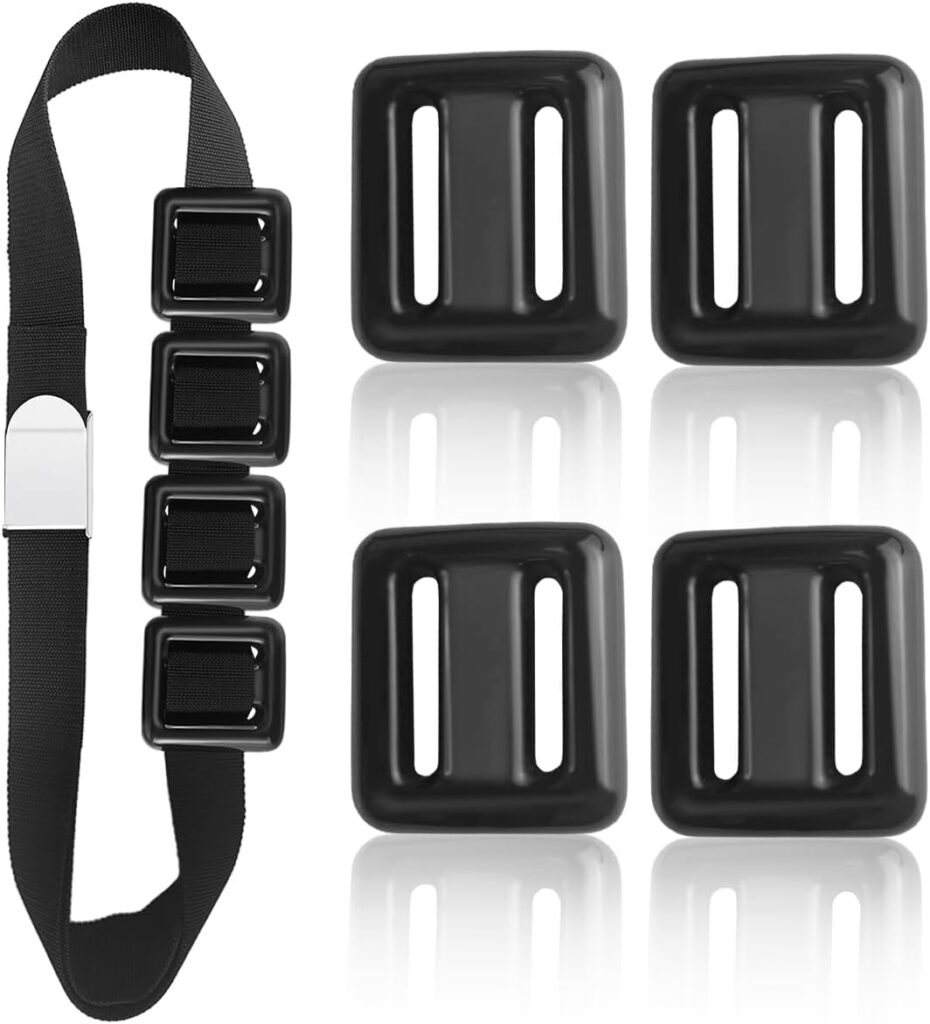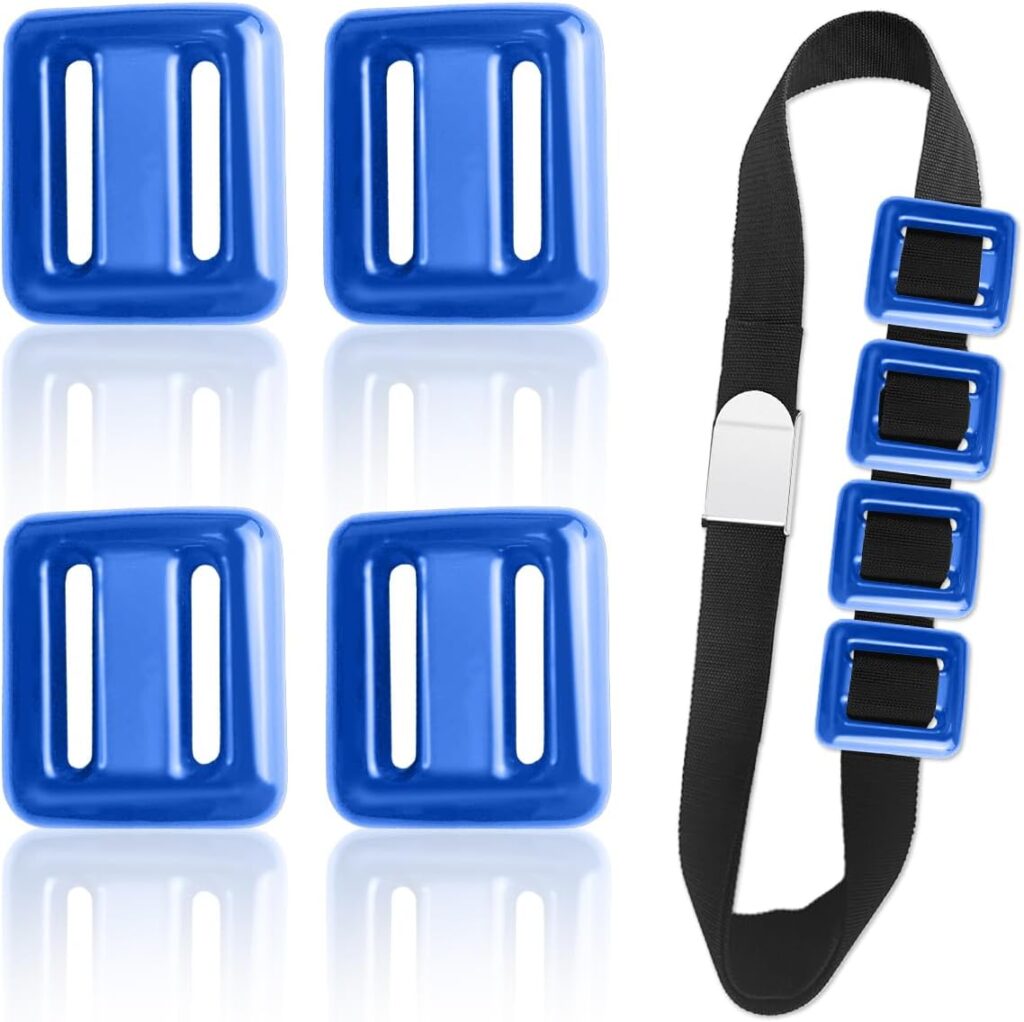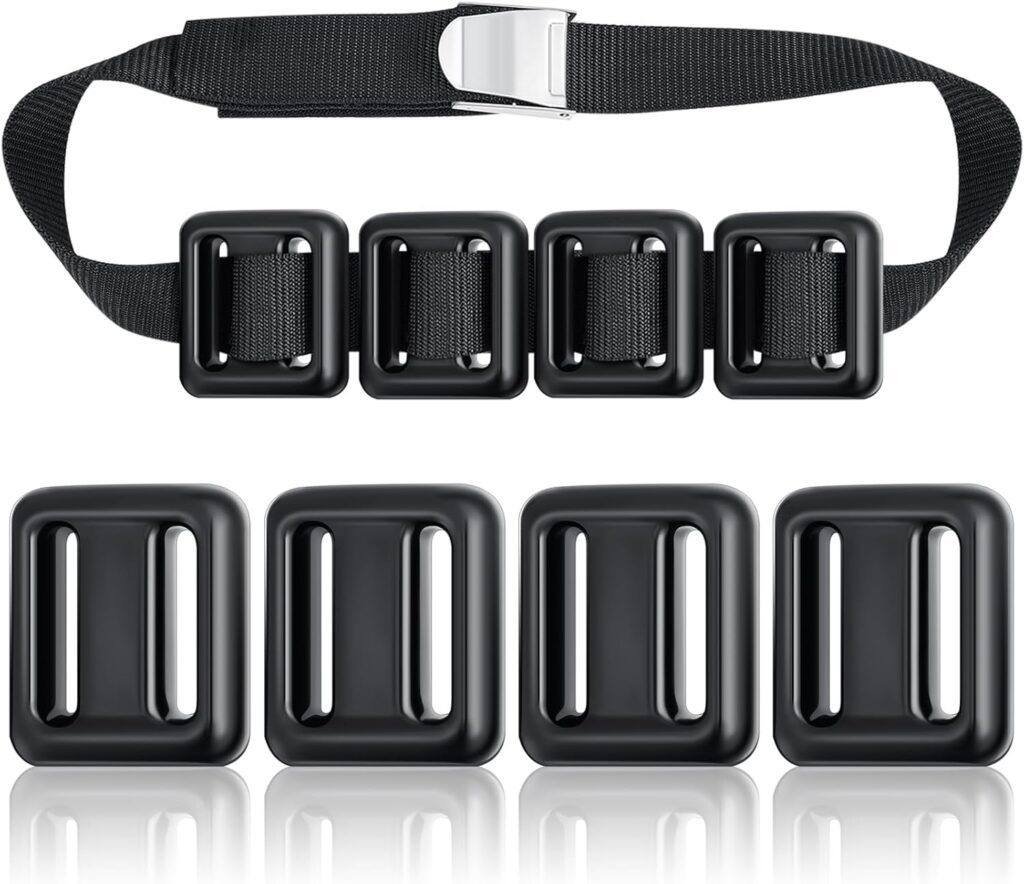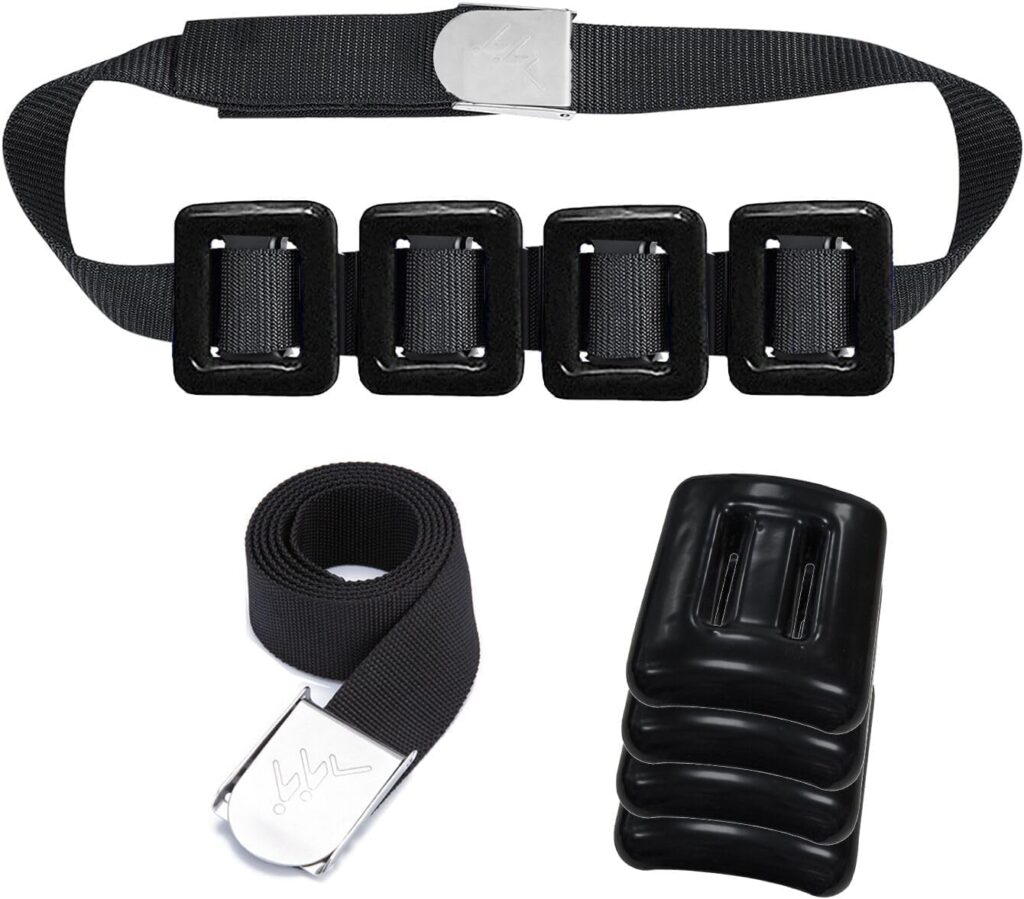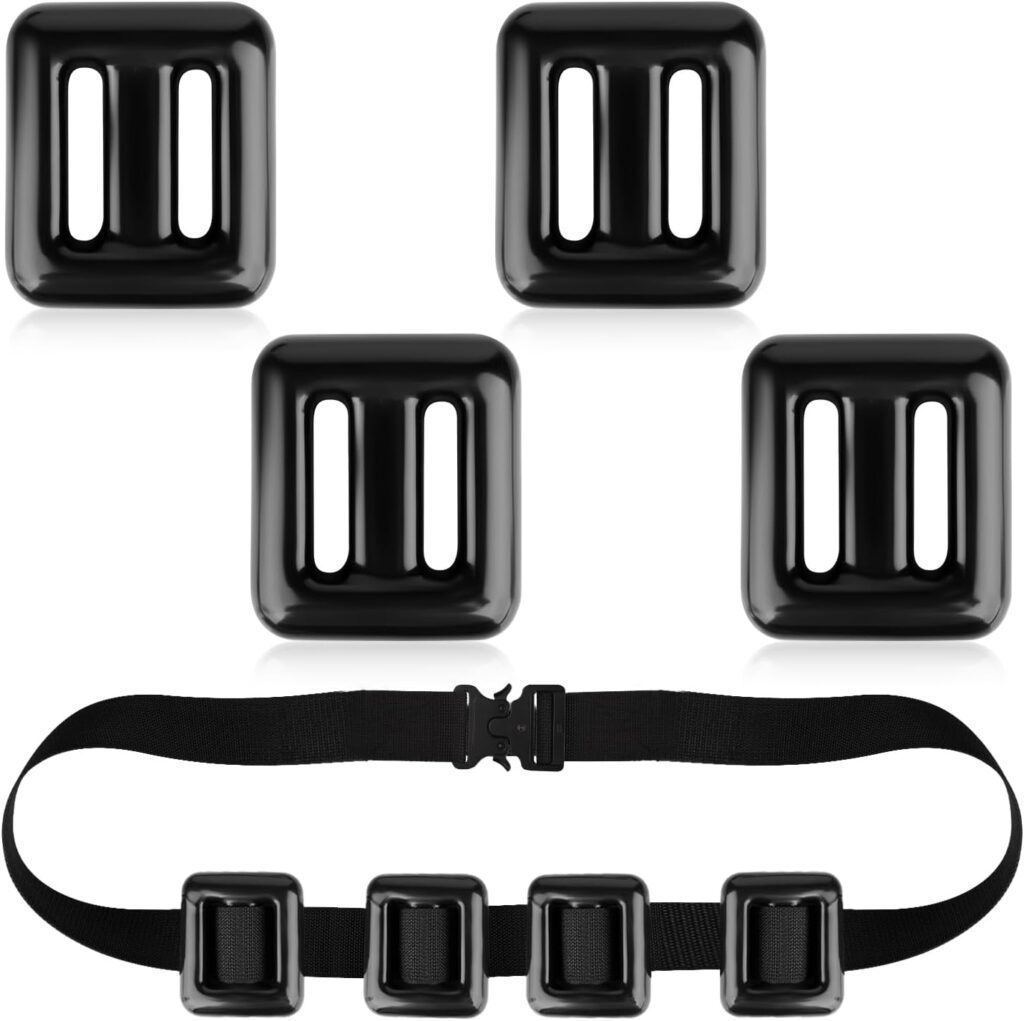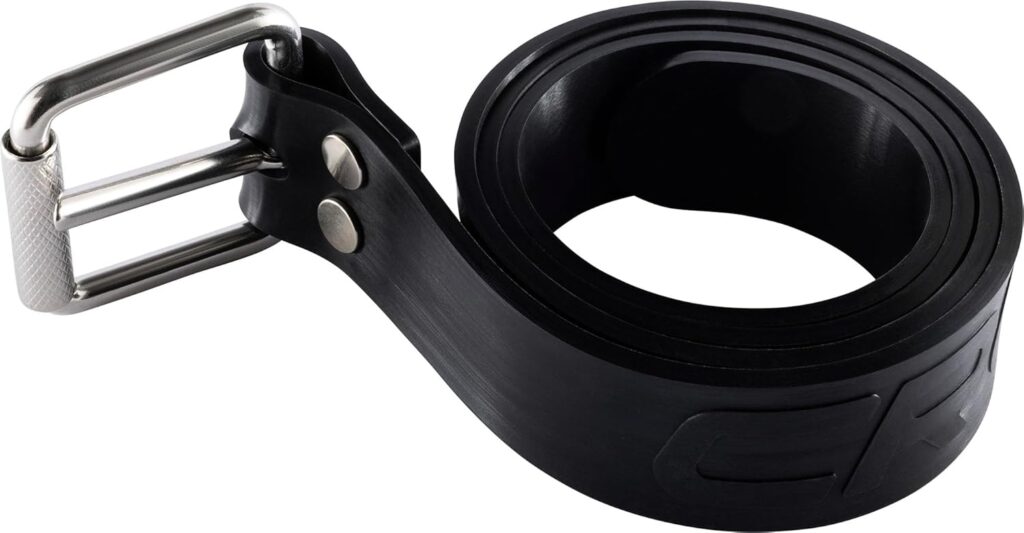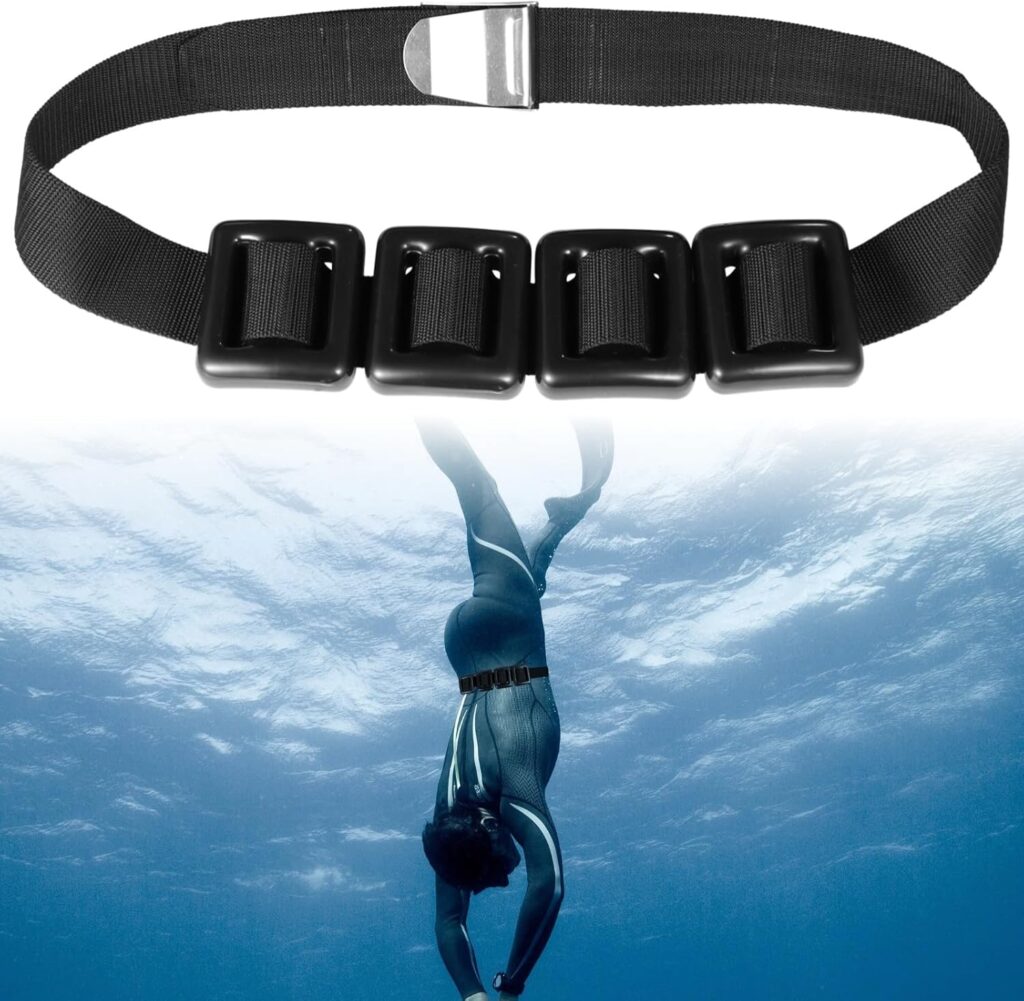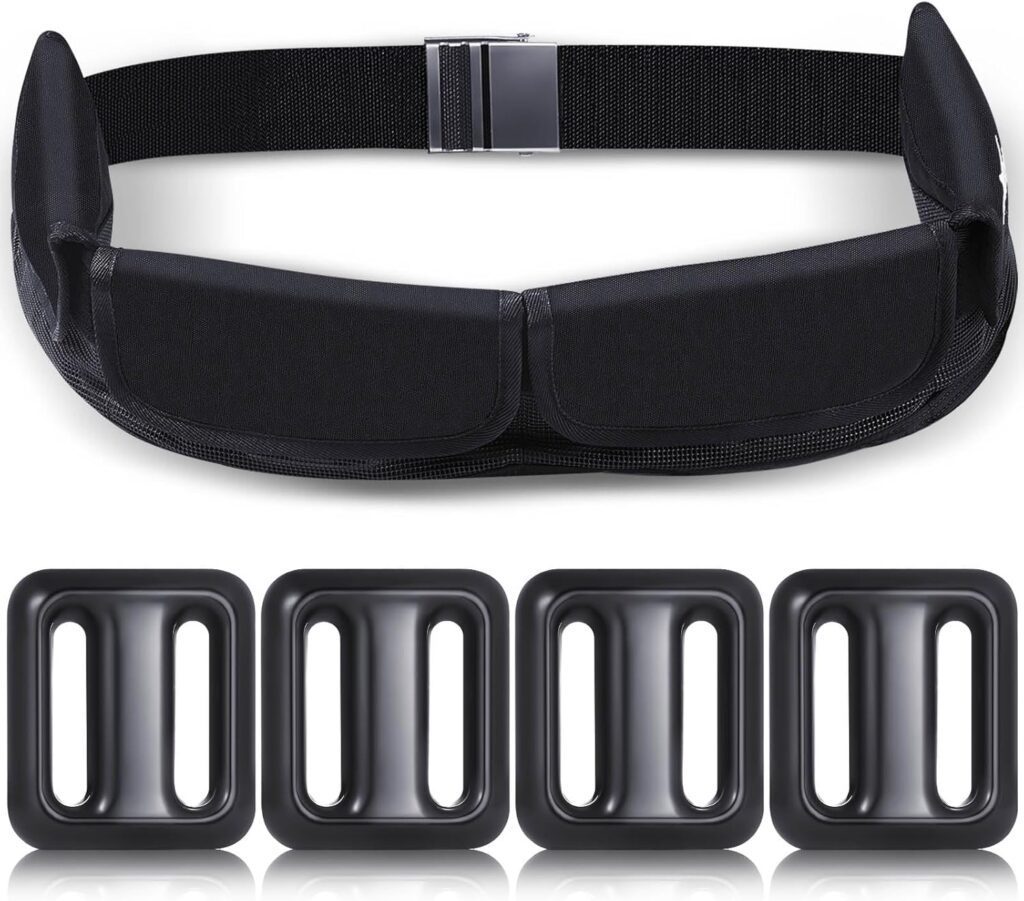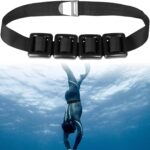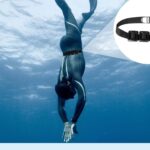10 Best Diving Weight Belts
When you hear people mention diving weight belt, you might think it’s a belt that helps you lose weight underwater, but no, it’s the secret helper that actually stops you from floating like a cork.
Now that we’ve got that out of the way, let’s get serious.
What is a diving weight belt?
A diving weight belt is a simple piece of gear: a flexible strap you fasten around your hips, loaded with lead weights to counteract buoyancy. It helps keep you neutrally buoyant underwater so you float neither like a balloon nor sink like a stone. It’s the difference between smooth glide and awkward flail.
In plain terms: imagine your body is like a swimsuit’s floatie, it wants to rise. A diving weight belt gently tugs you downward just enough to let your fins do the work, not your arms. It’s part of your scuba diving gear set, and it keeps the whole rig balanced.
Best Diving Weight Belts
Choosing the right diving weight belt can make the difference between a smooth, balanced dive and a constant fight against buoyancy. The best diving weight belts combine durability, quick-release safety, and comfort, all while holding weights securely in place.
Below are reviews of some top-rated options along with their strengths and weaknesses.
1. Cressi Nylon Weight Belt with Hard Plastic Buckle
Designed in Italy, this belt combines a sleek style with solid underwater performance. The hard plastic buckle reduces overall weight while staying secure throughout the dive. Divers like its streamlined feel, especially for freediving and spearfishing.
Pros
- Lightweight plastic buckle
- Trusted brand quality
- Sleek design for minimal drag
- Comfortable fit
- Good for spearfishing setups
Cons
- Plastic buckle less durable than metal
- May slip slightly if not tightened properly
2. Quaocens 4 Pcs Scuba Weight Belt
This belt feels sturdy with its metal block buckle and coated dive weights, giving divers confidence underwater. The nylon belt fits comfortably and adjusts easily for various waist sizes. Overall, it provides a reliable balance for free diving without being overly bulky.
Pros
- Durable metal block buckle
- Comfortable nylon material
- Coated weights resist corrosion
- Easy size adjustment
- Quick setup for beginners
Cons
- Limited color options
- May feel slightly heavy for casual snorkeling
3. Jamceoceo 4 PCS Diving Weights
Divers appreciate its simple design with a reliable metal buckle that secures well during underwater movement. The blue coating helps protect against rust while adding a distinctive look. It works efficiently for freediving and underwater operations with minimal fuss.
Pros
- Corrosion-resistant coating
- Strong metal buckle
- Easy to use for freediving
- Affordable choice
- Lightweight yet effective
Cons
- Buckle finish may scratch over time
- Not ideal for extremely cold waters
4. Tellegloww 4 Pcs Dive Weights Belt
With a quick-release buckle and coated weights, this belt offers both safety and durability. The nylon strap adjusts easily, making it versatile for various diving activities. Many divers appreciate its balanced weight distribution underwater.
Pros
- Quick-release safety buckle
- Coated weights for rust prevention
- Adjustable nylon belt
- Good for multiple dive types
- Easy to store and clean
Cons
- Belt length may not suit larger divers
- Coating may chip with rough use
5. MOPHOEXII Dive Weights for Scuba Diving
Offering weight options from 1lb to 4.4lb, this set provides flexibility for different diving needs. The vinyl coating ensures long-term durability while reducing wear on the belt. It delivers consistent performance in both fresh and saltwater conditions.
Pros
- Multiple weight choices
- Vinyl coating for protection
- Long-lasting durability
- Works for various diving environments
- Easy to attach and remove weights
Cons
- Separate belt purchase needed for some sets
- Slightly bulkier at higher weights
6. PEUTIER 4pcs Scuba Weights Belt
This belt balances affordability with reliable underwater performance. Its metal quick-release buckle ensures safety while the nylon belt stays comfortable throughout long dives. The 0.5kg weights provide an even, easy-to-manage distribution.
Pros
- Quick-release buckle
- Lightweight weights for easy use
- Affordable price point
- Simple yet effective design
- Adjustable fit for most divers
Cons
- Limited weight capacity
- Not ideal for deep technical dives
7. CRESSI Durable Marseillaise Weight Belt
Built for serious freedivers and spearfishers, this belt uses a robust design for maximum stability. The Marseillaise buckle system offers precision adjustment with quick release when needed. Italian craftsmanship ensures it handles demanding dives with ease.
Pros
- High-quality construction
- Marseillaise quick-release system
- Excellent stability in water
- Perfect for spearfishing setups
- Comfortable stretch material
Cons
- Premium pricing compared to others
- May be overbuilt for casual divers
8. Homaisson 4 PCS 2.2lb Dive Weights with Belt
Offering a 32–52 inch adjustable belt, this option suits a wide range of divers comfortably. The quick-release buckle and coated lead weights give both safety and corrosion resistance. Divers like its straightforward design for recreational and free diving.
Pros
- Wide adjustable size range
- Corrosion-resistant weights
- Quick-release feature
- Comfortable fit for longer dives
- Easy setup process
Cons
- Coating may wear with heavy use
- Limited color choices
9. Tellegloww 4 Pcs 2.2 lb Dive Weights Belt with Pockets
This belt stands out with its zippered pockets that keep weights secure and streamlined. The quick-release buckle offers emergency safety while the coated weights prevent rust. Divers appreciate the reduced drag from the enclosed pockets.
Pros
- Zippered pockets for weight security
- Quick-release buckle
- Corrosion-resistant coating
- Reduced drag underwater
- Adjustable nylon strap
Cons
- Slightly heavier design
- Pockets require careful closing before diving
10. MOOCY 4 Neoprene Pocket Scuba Weight Belt
Made with neoprene, this belt provides extra comfort while keeping weights steady in pockets. The quick-release buckle adds safety, and the adjustable fit suits various waist sizes. It is a good option for divers seeking both performance and comfort.
Pros
- Neoprene material for comfort
- Secure pocket design
- Quick-release safety buckle
- Adjustable fit for many divers
- Suitable for long dive sessions
Cons
- Neoprene may stretch over time
- Bulkier than simple nylon belts
Why Do You Need a Diving Weight Belt
When you enter the water, your body, wetsuit, and tank all want to float. A diving weight belt helps you stay balanced and in control, so you can descend safely and move with ease instead of fighting buoyancy.
Why you need a diving weight belt:
- Control your buoyancy: It offsets the natural floatation of your body and wetsuit, letting you descend smoothly without flailing your arms or burning energy.
- Achieve neutral balance: With the right weight, you neither sink like a rock nor drift upward, making swimming effortless and air consumption more efficient.
- Stabilize trim and position: Proper weight placement keeps your body horizontal, so you glide rather than tilt head-first or feet-first.
- Safety in emergencies: A quick-release belt lets you ditch weight fast if you need to surface quickly.
- Adapt to changing gear: Different wetsuits, tanks, or water types affect buoyancy. A belt gives flexibility to add or remove weight as conditions change.
Why belts slip and how to fix it
Depth compresses your wetsuit. That neat snug feeling you had at the surface disappears by 30 feet, letting your belt slide. That’s why rubber diving weight belts and the old-school Marseillaise stretch belts are beloved; they cling to neoprene and snap back as the suit expands again. On the other hand, plain nylon or webbing often slides on slick wetsuits.
Solution: Use a stretch rubber or Marseillaise belt. Thread it snugly, tuck the excess across your hips, and do a “lean-forward” test before entry to make sure the buckle stays where you can reach it. If not, tweak it.
How heavy should my weight belt be for diving?
Figuring how much weight you need depends on your body, suit thickness, weights in your scuba tank, and your lungs. A good starting rule: add 10 % of your body weight, then adjust. If you’re using a steel tank, you may need less, since the tank itself adds negative buoyancy.
To calculate diving weight belt load:
- Stand in your gear on land not in water until you’re slightly negative.
- In the pool, float at eye level with half a breath. If you drift up, add small weight; if you’re descending too much, remove some.
Once you’re near neutral, you’re golden. Keep note of the final weight. That way, next time you’re diving the same kit, you don’t have to guess.
Emergency release: ditchable vs non-ditchable weights
One of the biggest concerns is: “Can I get rid of the weights fast if I’m in trouble?” You should split your load: belts buy convenience, but integrated weight belt for scuba diving systems or a harness keep weights more secure. Still, at least half of your weight should be on a belt you can drop easily.
Practice: After gearing up, have a partner gently pull: can you release quickly? Do it again with gloves on, in case you drop your snorkel mask or scoop up a diver needing help.
Quick-release buckles (metal cam or stainless steel) beat plastic versions, especially when gloved or in cold. Keepers should not block the release tab.
Picking materials: hard blocks vs soft pouches and rubber vs nylon
- Hard blocks: easy to slide on the belt, predictable, but cold and heavy; best for trim pocket or harness when you want compact shape.
- Soft weights: crushed lead in fabric pouches; comfy and mold to your hips. Ideal for travel or shorter dives. Just rinse and dry thoroughly.
A soft weights for scuba diving setup is easier to pack inside a suitcase and kinder to your skin. But they might end up spinning if not secured.
As for the belt: a diving belt with weights should be stretch rubber or wide nylon with good friction, depending on your need for grip or comfort.
Trim: head-down or feet-down issues
If your head drops or your feet sink, it means weight is off-center. Instead of adding more lead, shift a small amount backward or forward. Use trim pockets or back-mounted weights.
For example, move 0.5-1 kg from your belt to a plate on your BCD’s rear to level out. Test your hover at 15 ft, adjust, and repeat until your body floats horizontally.

Freediving vs scuba: what belt works best?
Freedivers often use thin, stretch freediving weight belts that hug the waist, so the belt stays stable on exhale. They prefer Marseillaise style for its grip. Since freediving doesn’t rely on a buoyancy compensator or tank, you need a belt that stays put absolutely.
On scuba, especially recreational diving, you might prefer a wider belt with easy buckle access and modular weights. Freediving belts often lack quick-release features. Both styles suit different needs:
- How to put on a weight belt free diving: snug but not painful. You should barely move it when exhaling. Paddle with minimal fin drag.
- Scuba diving weight belt: broader, adjustable, quick to release, and comfortable with fins and BCD.
Cold water, thick suits, and sore hips
Cold water means 7-mm suits that trap more air and raise buoyancy. A simple belt can bite into your hips. Divide the load: some weight on your belt, some in a technical harness or scuba diving gear set with plate pockets.
Another trick: use padded belt keepers or wear a thin rashguard underneath to reduce direct pressure.
If your belt is too heavy, your body will tense up and tire quickly. Spread the load. You’ll feel better, move better, and enjoy the dive more.
Shore entries, travel, and packing tips
Surf or surge entries can yank your belt loose. Stretch belts help there too, they hold tight during the impact. Keep the buckle in front and tuck it under your harness crotch strap if needed.
For travel, soft weights and a snorkeling gear set packed in soft bags make life easier. Many dive shops will loan weights; just bring a snorkel mask and fins or gear for how to snorkel and how to scuba dive practice if it’s your first time abroad.
Choosing the best diving weight belts by diver type
| Diver Type | Belt Style & Weights |
| Beginner on shore dives | Rubber belt with hard block weights and quick-release |
| Traveler | Soft weight pouches in nylon belt, compact and light |
| Tech or cold-water diver | Harness with front/back plate pockets and trim integration |
| Freediver | Marseillaise stretch belt, few weights, stable and snug |
For best diving weight belts, look for tested stitch strength, stainless buckles, and materials that tolerate salt without rapid wear.
Care, cleaning, and longevity
Salt and sand are enemy number one. Rinse your belt thoroughly in fresh water, inside and out. Turn soft pouches inside out, dry in shade, and store flat or hung to avoid creases.
Inspect the belt: is there rust on the buckle? A cracked loop? Replace before it causes a surprise on the next dive.
Common issues and how to fix them
- Belt rides up: use wider rubber, or reposition lower on the hips.
- Hip bruising: add padding or shift weight to plates.
- Buckle inaccessible with gloves: practice, choose larger tab, consider metal cam.
- Soft weight bag leaks: patch promptly; keep duct tape in your kit as backup.
- Travel weight hassle: plan locally sourced lead or leave your belt weight at home if allowed.
Safety drills worth practicing
- One-handed drop: Climb in, activate the buckle one-handed. Do it again after simulating scramble entry.
- Glove drop: Rehearse the drop with dry gloves.
- Buddy retrieve: Have someone pass your weights back if you drop them accidentally.
- Trim test: Hover at 10–15 ft, see if you’re flat. If not, shift small weight until you are.
These small drills keep your head clear when things go sideways.
The Bottom Line on the Best Diving Weight Belts
Your diving weight belt is simple gear with a huge job. Fit it snug but not tight. Balance weight for emergency release, trim, and comfort. Keep weights tidy and belt clean. Practice drops and check your gear. Change styles depending on dive type: freedive, travel, cold water. And always adjust before you hit the water.

